How to Use Social Listening and Customer Sentiment Analysis To Improve Your Content Strategy
Podcast: Play in new window | Download
Subscribe Today RSS
This week we're digging into how to optimize your content strategy using customer sentiment. Customer service and community management can be difficult tasks, but they can also be incredibly beneficial to your content creation strategies.

Check out the video or podcast above. 👆 Subscribe to our weekly live stream on Facebook, or take it on the go with a podcast on your chosen platform. Keep up-to-date on news, trends, and tips in digital marketing and join in on the conversation.
What's New?
Surprise surprise, Google has some new changes in their pipeline! We've also got some news on Superbowl ads and Pinterest Shopping! Check out the links below. 👇
Google Will Suspend Merchant Sites That Show Higher Prices at Checkout - Google announced that, beginning on April 6, it will start enforcing its longstanding policy of requiring merchants to show the price of an item from their Google Merchant feed on their e-commerce page, all the way through the checkout process. If you show a higher price than what is on your landing page, Google can suspend your account.
Breaking: Google Ads to Phase Out Modified Broad Match - Modified broad match will be sunset, with phrase match taking over. Check out the article to find out what this means for advertisers and how queries match to keywords.
Why Brands Skipped Super Bowl Ads and Counterprogrammed Instead - More brands are finding ways to tap into interest around the big game without an in-game ad, opting for cost-effective, insightful connections over reach.
Pinterest's Ascent Continues as Holidays Spur Explosive Adoption of Shopping Ads - Pinterest's revenue jumped 76% year-on-year to $706 million in the fourth quarter, bolstered by new advertising offerings and an expansion of shopping capabilities.
What's Working?
Social Media is a powerful tool when it comes to brand awareness and audience engagement.
These are perfect platforms for understanding social listening and customer sentiment based on social media analytics.
This information can be used to create a content strategy that is targeted based on the audience’s feelings toward specific content.
Let's break down what we'll be digging into:
- What’s Social Listening & Why Should You Care?
- What is Customer Sentiment Analysis?
- Where & How Do You Measure Customer Sentiment?
- Customer Sentiment Analytics
- Relationship Between SEO, Sentiment, and Content Development
- Adjusting your Content Strategy
- Challenge Response Guides
Let's get into it.
What’s Social Listening & Why Should You Care?
Social listening is the process of monitoring social media channels for mentions of your brand, competitors, product, and more.
It gives brands an opportunity to track, analyze, and respond to conversations about them on social media.
It’s also a crucial component of audience research.
Social listening is NOT social media monitoring.
Social media monitoring looks at metrics like engagement rate and number of mentions, whereas social listening looks beyond the numbers to consider the mood behind the data.
Understanding how people feel about your brand helps you keep your marketing and product development efforts on track.

What is Customer Sentiment Analysis?
Customer sentiment analysis is the automated process of discovering emotions in online communications to find out how customers feel about your product, brand, or service.
Using Natural Language Processing (NLP) and a series of algorithms, sentiment analysis models are able to detect patterns in text and automatically classify opinions as positive, negative, or neutral.
When people engage with your brand by leaving customer feedback ‒ whether it’s to complain on Twitter or leave a flattering review about your product, there’s always an underlying emotion attached to that action.
With customer sentiment analysis, you can capture this subjective information to understand your customers at a higher level.
Why are they feeling negative about your customer service? Which product features do they like the most?

Having access to the right data at the right time can be a game-changer when it comes to making decisions that boost customer satisfaction and loyalty.
For example, tracking customer sentiment on social media in real-time can help you instantly spot a critical issue affecting your customers, so you can take immediate action.
Where & How Do You Measure Customer Sentiment?
There are so many tools available for customer sentiment analysis that it can be a daunting task trying to decide what would work best for your business.
Some of the most common tools include:
- Facebook Page Insights
- Iconosqaure for Instagram
- Buzz Sumo
- Mention
- Monkey Learn
- IBM Watson
- Aylien
- Amazon Comprehend
- Lexalytics
And that's just to name a few options in terms of where you can find data for customer sentiment analysis. Check out the links for each platform for more information. Today we'll be taking a closer look at the top 4 platforms.
And that brings us to how you measure customer sentiment using these tools.
The goal here is to look at how people are feeling about your brand and content, so metrics like follower count are not where you want to focus. You want to look at how people are engaging with and reacting to your content, through likes, comments, reviews, shares, etc.
After collecting your data, you classify it into a negative, positive, or neutral eomtion.
SaaS tools are relatively easy to use, and generally require little to no setup. Most provide integrations and APIs that you can connect to your favourite apps, which can be incredibly helpful.
So, let's take a look at those top 4 platforms and see how the process works.
Customer Sentiment Analysis With Facebook Page Insights
Facebook has a very complex suite of analytics. For Customer Sentiment Analysis, you want to focus on:
- Reactions
- Shares
- Comments
- Video views
- Post / link clicks
- Demographics
Thie image below shows many of the insights you have access to, and there's so much more data available through Facebook page insights.

From the post above, you can how many people were reached, how many people engaged with the post, and you see the breakdown of reactions, showing how people felt about the post.
These numbers can help you see what is working with the post, and in this case, the results are very good. One area of improvement could be looking at ways to boost engagement, perhaps by adjusting the copy with a stronger call to action.
The majority of the reactions were either like or love, with love having the highest engagement.
This tells us that people not only liked the post, but they're also very passionate and feel a strong emotional connection with the content, since more people chose to love over simply liking the post.
Shares were also very high, which again tells us that people really resonated with the content, so much that they shared it with their friends and network.
Post clicks also tell a story. People were not just loving and sharing the post and moving on. They were clicking on it and going through all of the images to see the entire post. This again shows a high level of interest in the content.
The image below shows the many options available through Facebook page insights:
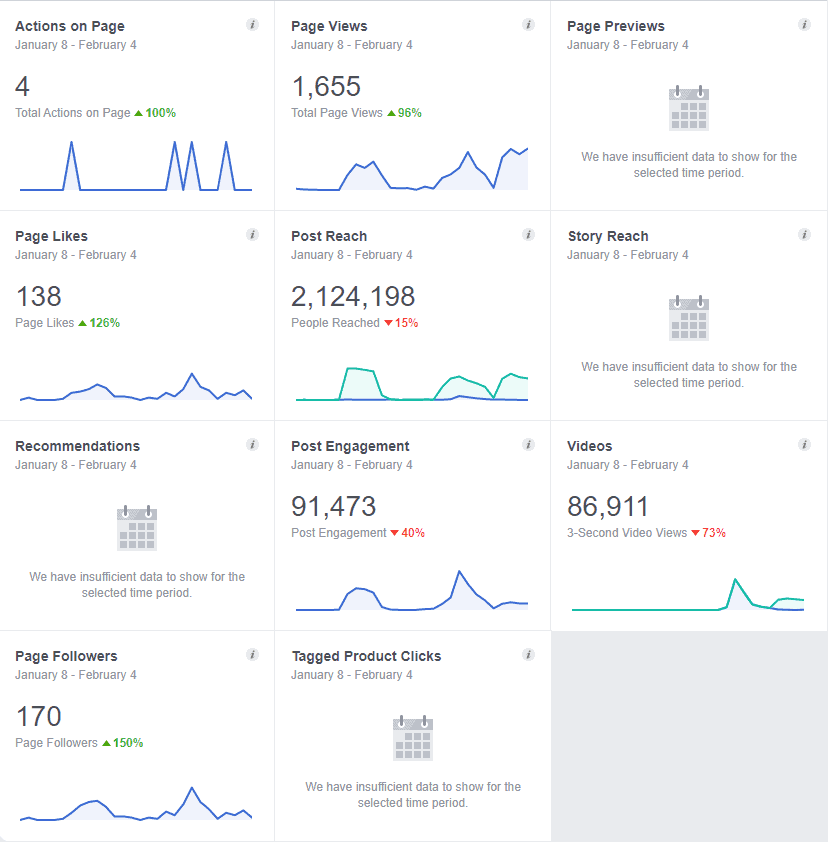
You can also access demographics such as age, gender, location, and language; see how long people are spending viewing your videos; and, how people are interacting with your tagged products.
Take a look at the video post below, for example:
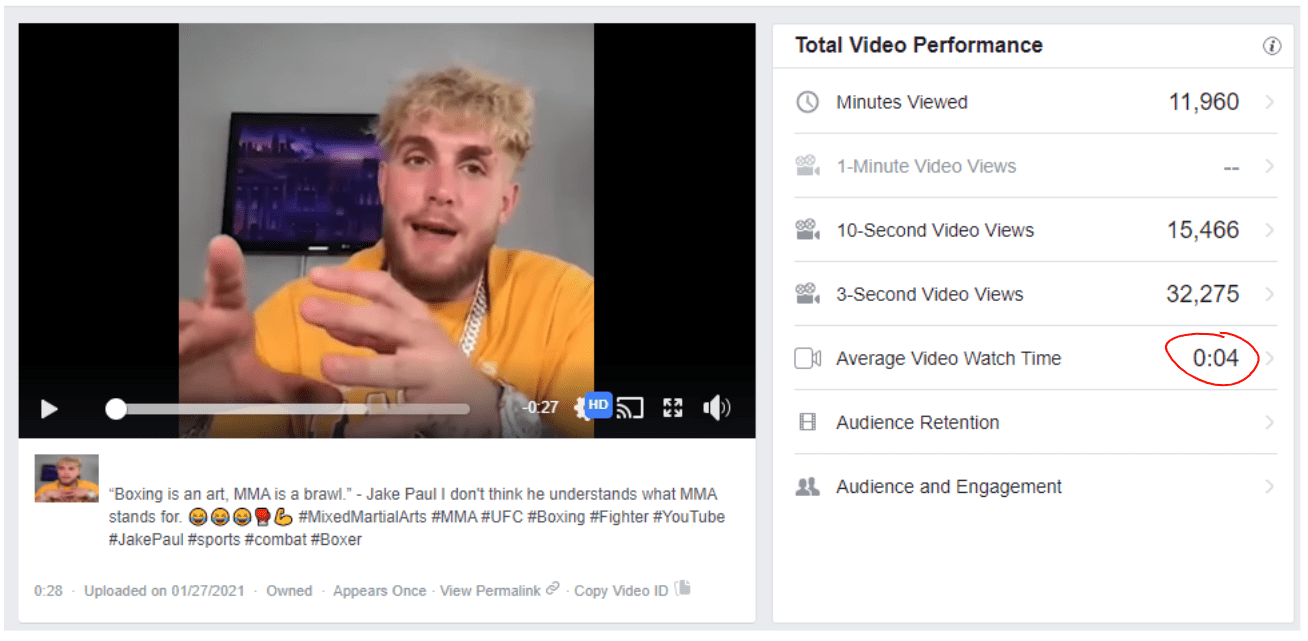
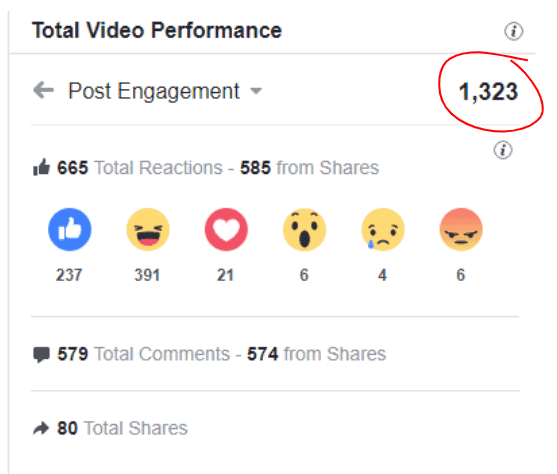
This 30-second video had an average watch time of 4 seconds, and many viewers didn't even have the volume on to hear him speak. At first, you might think no one really liked the content. But take a look at the post engagement.
This shows the audience's sentiment toward Jake Paul, more so than the post itself, especially when combined with the high engagement on the post.
The reaction with the highest engagement was the laugh emoji, with likes coming in 2nd. The post also had 579 comments and 80 shares.
From this data, we can see that the content generated a lot of buzz and attention. People were compelled to engage with the content, and share it with their friends and network, even though most people didn't even watch the video.
So, this tells us that the content really resonated with the audience, and that most people interested in boxing and combat sports don't like Jake Paul.
Customer Sentiment Analysis With Iconosquare
Iconosquare offers many options for Instagram content analysis, such as:
- Engagement - how people are engaging with your content.
- Community - demographics, such as gender, location, and language.
- Reach - how many people saw your content.
- Profile Activity - how people interacted with your profile.
- Stories - How people reacted to your stories.
You can also generate daily, weekly, and monthly reports that neatly lay out the data with nice visual graphs, ready to present. It's kind of amazing.
![]()
Having everything laid out and presentable is a huge benefit and time saver, and it also makes it easy to find the data that you're looking for.
Let's take a look at a sample post and how we can pull useful data for customer sentiment analysis from Iconosquare's analytics.
![]()
This post had a very high number of likes, but comments were low, in comparison.
From this, we can see that people liked the content, but were not really interested in sharing their opinion.
Customer Sentiment Analysis With Buzz Sumo
BuzzSumo is a cloud-based platform that helps you discover the best engagement, content and outreach opportunities across social channels and search engines.
It's a great way to discover new keywords, trending stories, customer questions, and content success, all while monitoring what’s most important to your brand.
Some metrics you can track and analyze through Buzz Sumo include:
- Engagement
- Shares
- Reactions
- Link Clicks
- Top Performing YouTube videos
Buzzsumo is a unique collection of data specifically built to benefit marketers, but it still requires the creativity of the marketer to use the tool well.
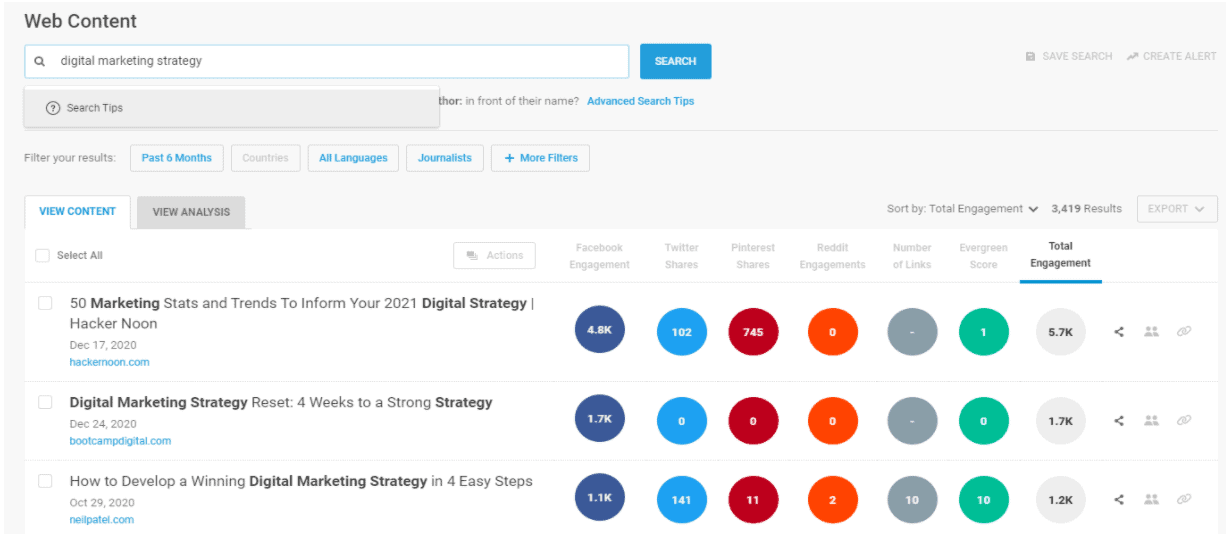
Customer Sentiment Analysis With Mention
Mention is similar to Buzz Sumo, as it is also a web and social media monitoring tool. Mention monitors the web, including the major social media channels, to keep you informed every time someone mentions your name, brand or target keywords. Its user-friendly interface makes it fairly easy to use, as well.
When Mention spots that somebody has talked about you or your brand, you can instantly see this through one of their apps (Web, Desktop, iPhone or Android). Alternatively, you can get daily summary alerts that show your mentions for a particular day.
You can:
- Monitor online media
- Analyze your competition
- Manage your brand
- Listen to your audience
- Pilot your social channels
- Grow your agency
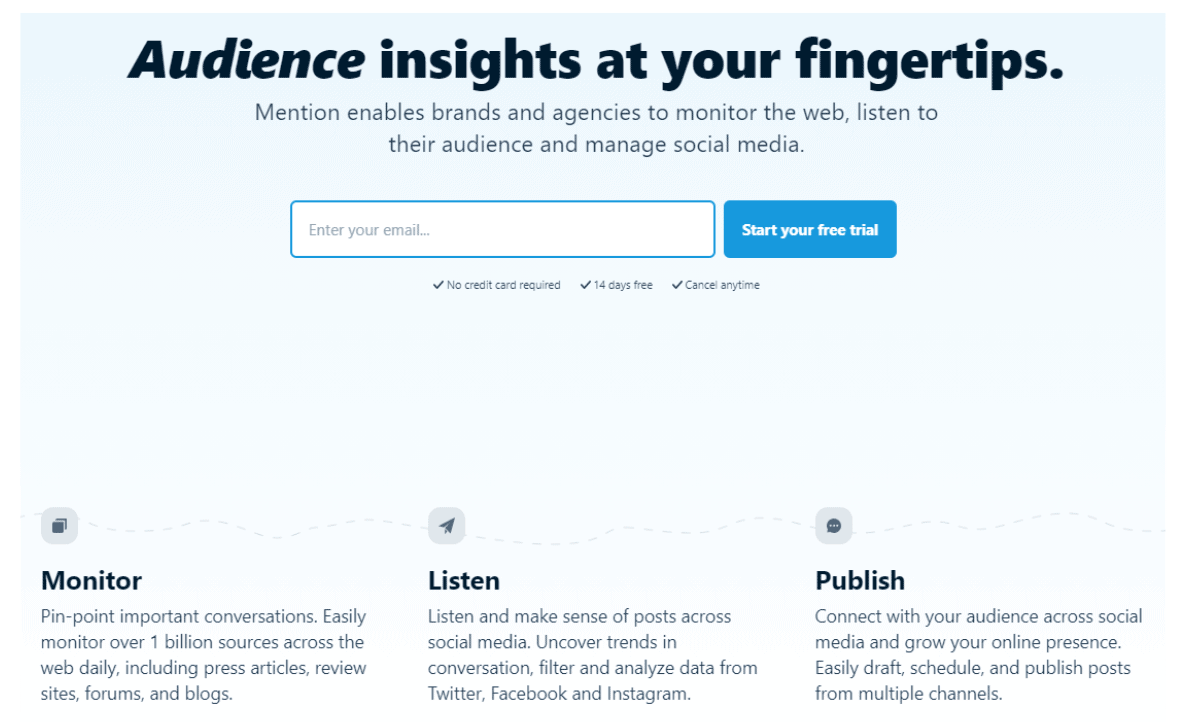
Let's take a quick look at the process:
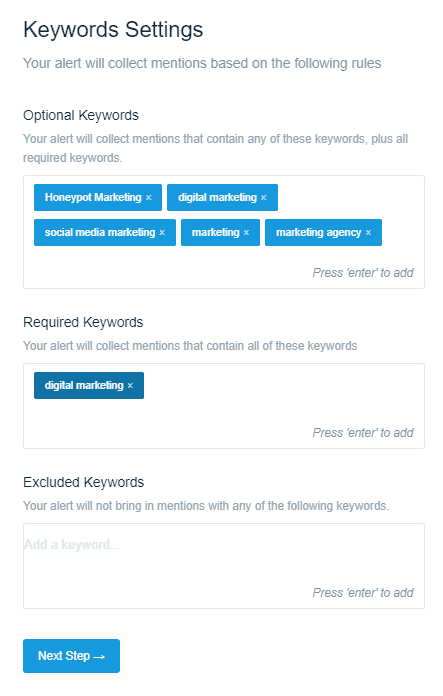
First, you choose the keyword you want to monitor. You can choose 3 types:
- Optional Keywords
- Required Keywords
- Excluded Keywords
Next, you choose the pages you want to monitor, whether it's your website or social media channels.
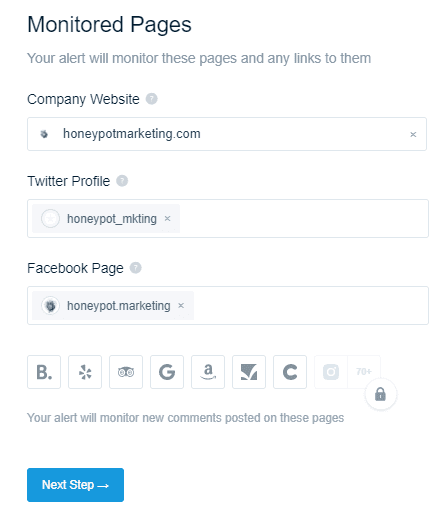
Finally, choose your sources and languages you want to monitor.
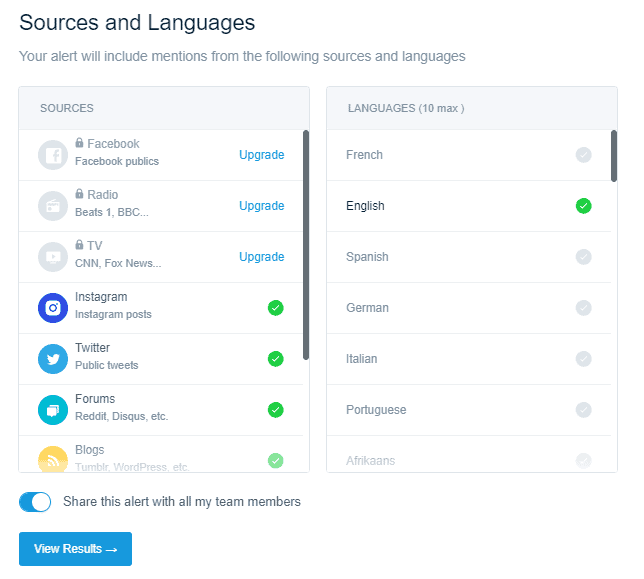
It's an easy-to-use system and a powerful tool to have in your toolbox.
Relationship Between SEO, Sentiment, and Content Development
Studying sentiments in product reviews can vastly improve the SEO of your product descriptions and meta tags.
It helps a business understand the most important features of their products and the qualities that consumers are searching for.
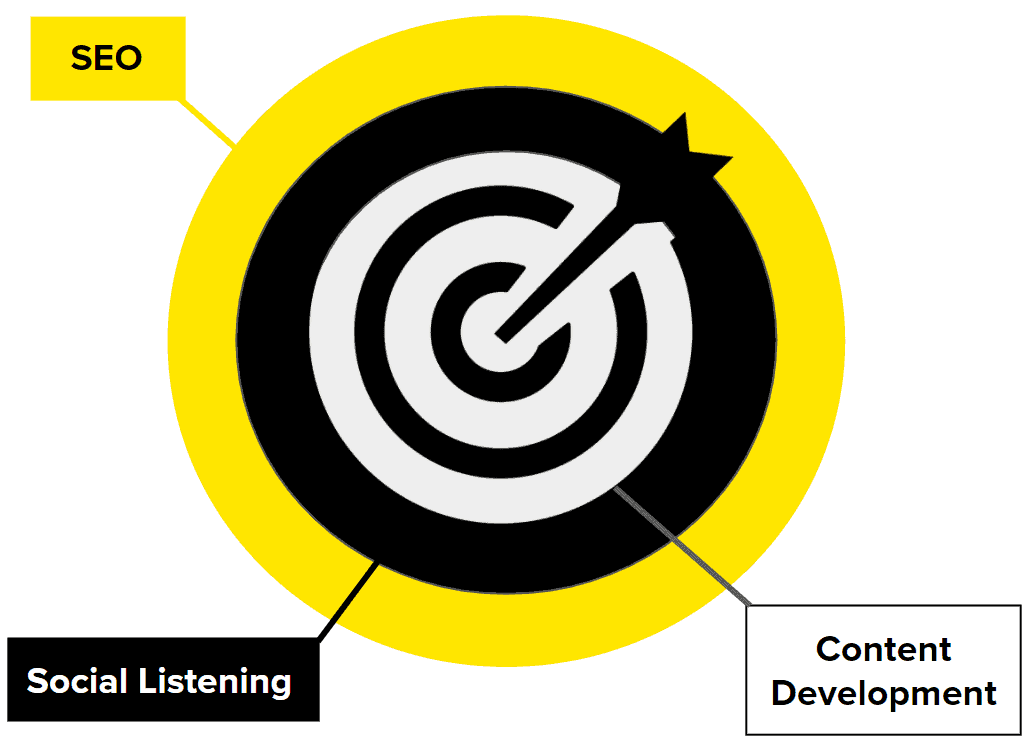
Sentiment analysis isn’t just useful for products or review data. It also measures opinions expressed in the comments sections of your blogs, videos or social media posts, which can also yield value and insight, especially if your content sees a lot of responses.
Many of these goals, brand awareness, thought leadership, customer loyalty/retention and others, are heavily influenced by how audiences feel about your company and its content.
It’s not just a matter of knowing what content pieces worked and which didn’t, but what specifically made people positively or negatively react. Measuring the opinions and feelings in your comment sections and other mentions can help you craft better content.
This allows you to craft content that is not only relevant but also more valuable to the reader, which helps build a strong customer experience to improve brand awareness and solidify your position as a strong thought leader.
Seo + Sentiment = Winning Content Strategy
- Do your keyword research to find the top keywords and phrases.
- Engage in social listening, and match those findings to your keywords.
- Use that combined data to understand what people are looking for and how they feel about it.
- Craft some amazing content that will resonate with your target audience, based on the analytics from your research.
For example:
- From your research, you select the top 5 questions people ask about your brand.
- You can develop FAQ videos to address those questions.
- Doing so reduces customer service traffic.
- Users don’t have to wait on hold to get answers.
- Customer Experience is improved overall.
Developing a Challenge Response Guide
Challenge Response Guides are used to outline the various responses that a brand can use in replying to comments, questions, and feedback from their audiences.
It helps to establish a consistent tone and flow in responding to customer inquiries and social media engagements.
Following a guide makes responding to challenging and negative content seamless and professional.

That's A Wrap
We have a wide variety of digital channels where consumers put their feelings into words:
- Emails
- Social media
- Blog post comments
- Reviews
- Websites
- Customer service exchanges
Plus a number of other channels that can serve as outlets for analyzing sentiments and better understanding the customer experience.
We hope you enjoyed the read, and if you have any questions, comments, or stories to share, sound off in the comments below or come say hi on our social channels! Thanks so much for reading!
![]()

